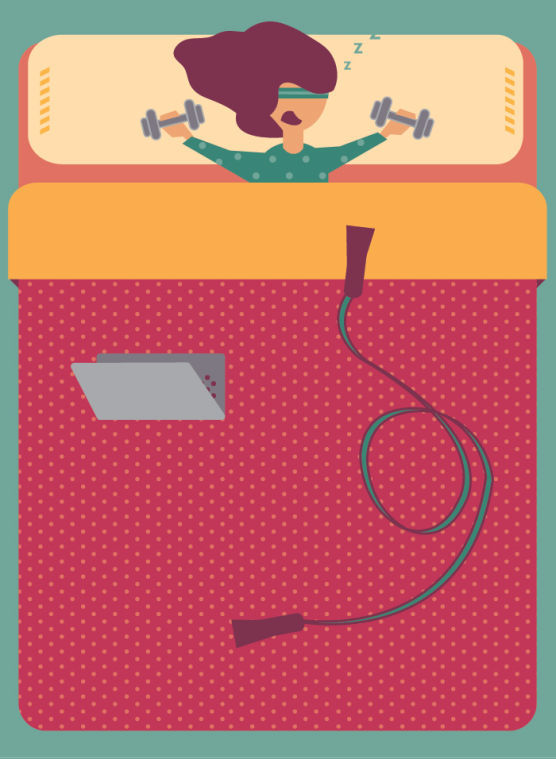Internet exercises get mixed reviews from fitness experts
Online workouts are not guaranteed to give desired results
April 7, 2014
With the help of online gurus and free home-workout YouTube channels, fitness fiends can get exercise instruction and motivation from the comfort of their own homes.
However, these increasingly popular online workouts may not yield the desired results. Some athletic trainers and health experts question the effectiveness of home and video workouts, and although these types of programs can offer convenience, they also have some drawbacks.
Michael Morrow, physical therapist and manager at AthletiCo, 20 N. Michigan Ave., said any type of exercise requires proper form and technique, something YouTube workouts do not always emphasize. He said users should be mindful of fitness injuries that can occur when the body moves in an unfamiliar way without practice.
“When you don’t get feedback from the person giving you instructions, it can be tricky,” Morrow said. “It wouldn’t hurt to get some pointers from a professional before following the lead of someone [who is] not physically present.”
Anthony Wall, the director of professional education at the American Council on Exercise, said online workouts can be a difficult fitness plan to navigate. He said they can be a useful alternative for people who do not have access to a gym or who are uncomfortable working out in public, but there are risks to exercising online.
Wall said online entities often misrepresent themselves and may not always have the knowledge or certifications necessary to safely instruct others.
“We really don’t know the credentials of the individual,” Wall said. “When you’re at the gym you at least can feel relatively comfortable that [the gym] has vetted and screened the person for having the right credentials.”
Wall said another concern with online workouts is the presenters do not always take into consideration varying fitness levels. Qualified professionals can tailor workouts to ability whereas online instructors have less flexibility in accomplishing that.
“Trainers look at someone [who]may be unfit and ask why,” Wall said. “When you’re looking online, everything looks sexy and great and they are often selling these routines to look like that, but they are for a smaller percentage of the population.”
Virtual workouts are becoming increasingly diverse, with trainers pulling from different styles and practices, which is appealing to those who want to try a variety of fitness routines from around the world, Morrow said.
Shanté Morgan, 26, an unlicensed health coach and owner of the fitness blog Carpe Diem Fitness, said she lost 27 pounds in 90 days with T25, a popular home-based exercise program developed by celebrity trainer Shaun Thompson. Morgan said the program facilitated a lifestyle change, which she used as momentum to start her private digital business as an online personal fitness trainer in October 2013.
Morgan designs fitness programs similar to T25 and Insanity, offering people a more convenient and private way to workout. She said she has made it her personal mission to educate others about fitness while getting in shape herself.
“I’m in the trenches with my challengers,” Morgan said. “Even without having to physically meet, we have a strong sense of community and support.”
Mark Brticevich, coordinator of Fitness & Recreation at Columbia, said he is uncertain about the value of popular web workouts. He said some may look like they are reliable, but users should approach them with caution.
“YouTube workouts make it hard to distinguish what your body can and cannot do,” Brticevich said. “There’s no such thing as a bad exercise, but some exercises may not be appropriate for everyone.”
Home-based programs such as Insanity and T25 are aimed toward already fit people, Brticevich said. He added it is risky to rely on someone who may not have the proper credentials to properly design a thorough exercise regimen, something that is hard to determine online.
Morgan said the growing demand for web-based home workouts is due to gym culture that deters people from working out in public.
With social media sites full of gym selfies that reinforce pressures to look a certain way, it can be intimidating to see people who are thinner or more muscular, and that strain can make exercise seem to be strictly about appearance and less about health, Morgan said.
“My challengers know that if you fall down, you just get back up and push harder,” Morgan said. “And I’m there with them every step of the way.”








